Two weeks ago I made rolags from some Nunoco mini batts. I was quite in love with the icy colours, so I decided to start spinning them immediately. During the past two weeks I have been enjoying that immensely!
I have been spinning on my light Malcolm Fielding spindles a lot, lately, so for this project I decided to spin on my other spindles instead. I was aiming for a thicker yarn, so I took the heavier spindles that I have, starting with the new Glasspin.
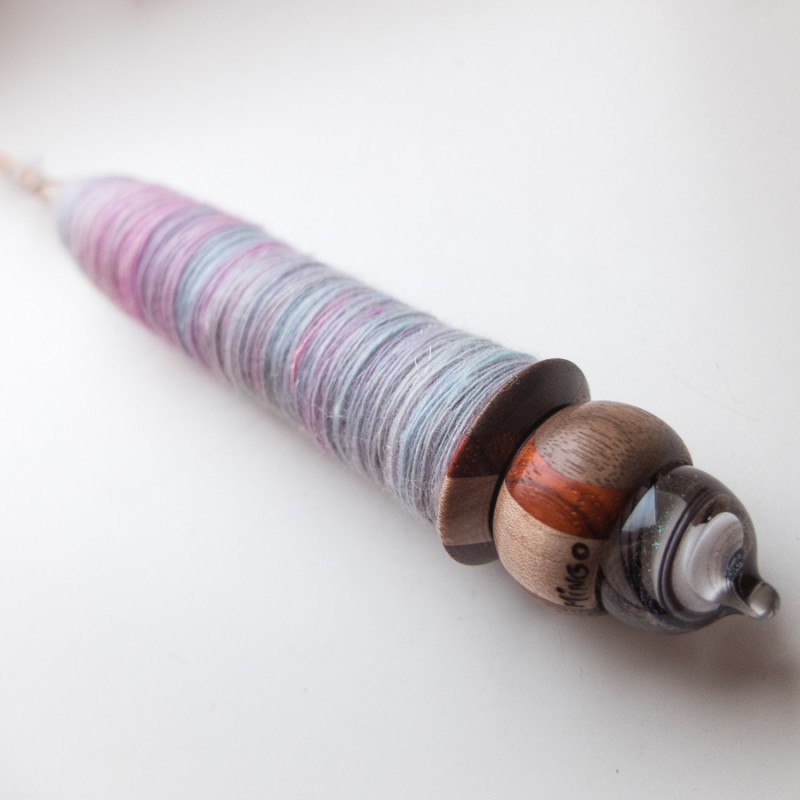
Yes, it does spin as nicely as it looks! The whorl is quite heavy, and the shaft is light, which I like. It is not hard to set into motion, and it spins quite long too. I want another one 😉
Then I moved on to a Phil Powell Queen’s Sceptre that was a custom order a while ago. It actually spins quite nicely, and I enjoyed using it again. It’s quite heavy, though, I think it’s my heaviest spindle at 50g/1.75oz. But it made me realize that the weight of a spindle is not as important to me as the thickness of the (flicking part of the) shaft, and the ratio of the shaft and whorl weights. I prefer a thin flicking area, and a high whorl-to-shaft-ratio (Carl from Woodland Woodworking is now providing this number, which would be very helpful if I were ever quick enough to snatch one of his spindles, but I’m not. Oh well.).
Next up was a Malcolm Fielding Dervish. This Dervish is a bit heavier than my other MF spindles, and has a slightly thicker shaft. It is quite a nice spinner, though. The shape of the whorl reminds me of a skirt. The spindle is dancing and the skirt flares up!
Then I moved on to a Silly Salmon Designs Tibetan. I have several of their spindles, and they spin great! One time, one of them arrived damaged somehow, and they sent me a replacement spindle without a problem. Great service! I did however stop ordering from them for now because customs here in The Netherlands are quite high (they always include a €13 fee for calculating how much more you owe them – I don’t mind paying the taxes, but that administration fee is ridiculous, because I don’t ever get the option to declare the goods myself). It became a bit expensive to pay an extra €20 per spindle… But they spin great, as I mentioned before, especially this ebony/pink ivory one.
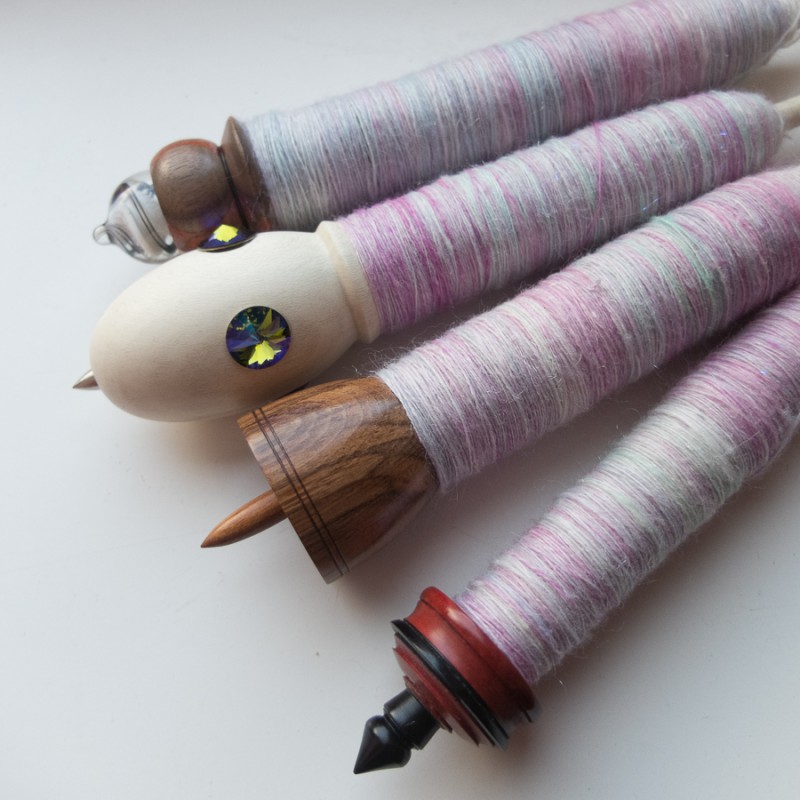
The next spindle in the spotlight was a Neal Brand Tibetan. Neal Brand’s spindles are quite beautiful and very recognizable because of the typical shape of the whorl and the tip. They are quite tall usually, so you can pack a good amount of singles on them. This one has a nice, robust spin, and the whorl is made of oak burl.
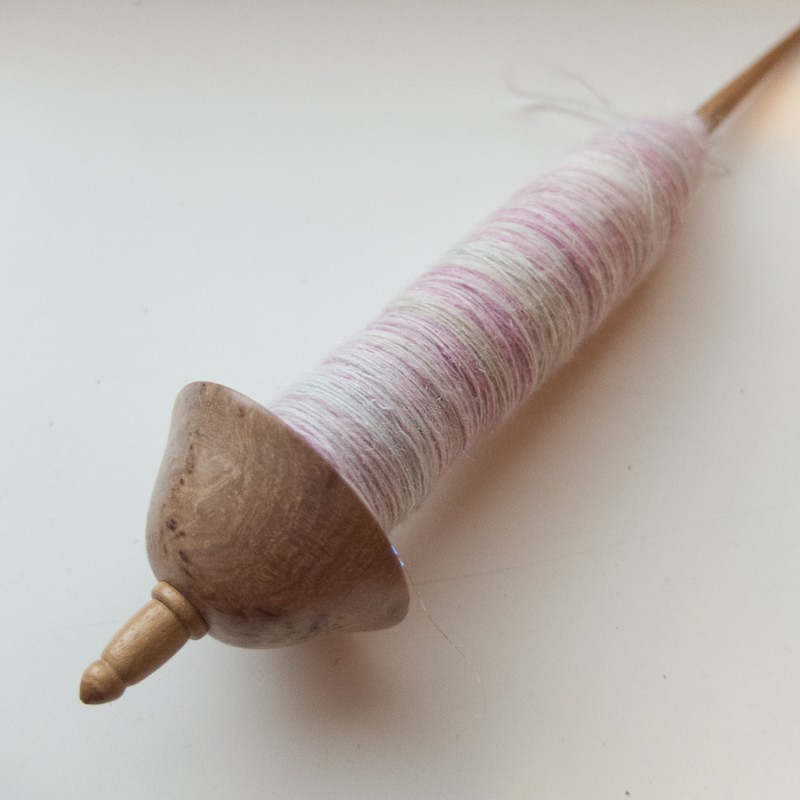
I still had some rolags left. What spindle to use next? I decided on a Phil Powell Russian in Hawaiian Koa. However, after a bit of spinning I decided that it was not that good for this project. It spins fast and not that long, and I was so used to the Tibetan style (slower, longer spin) by now that I found it hard to adapt. So I looked for another spindle, and decided on my TARDIS. It is a Woodland Woodworking Tibetan which I managed to order years ago, before everybody discovered his spindles (and before the teacup existed – which I would love to purchase one day!). This Tibetan has a very smooth and stable spin. Because of the wide whorl, it is a bit harder to set into motion, but once it spins, it spins very long.
When the TARDIS was full, there were still three rolags left. So I picked up a Texas Jeans bead spindle to finish the fibre. Good choice, if you don’t mind me saying 😉
The bead spindle has a fast, sustained spin, and it was easy to spin a bit thicker on it.
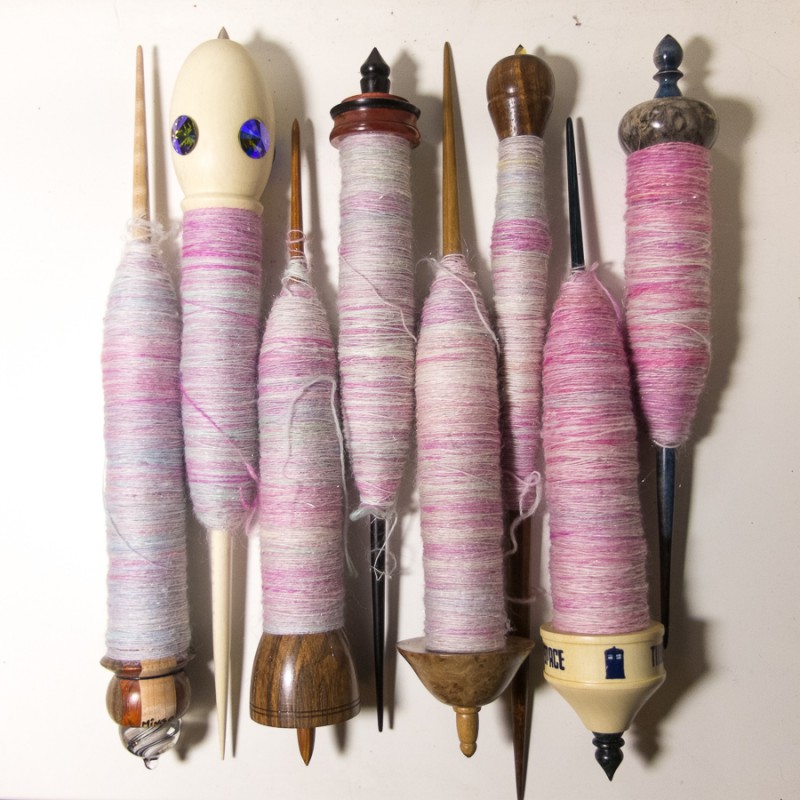
Now that I had finished spinning the singles, it was time to attach and cake them. I evened out some irregular bits, took out some fluffy stowaways, and then I was ready for plying!
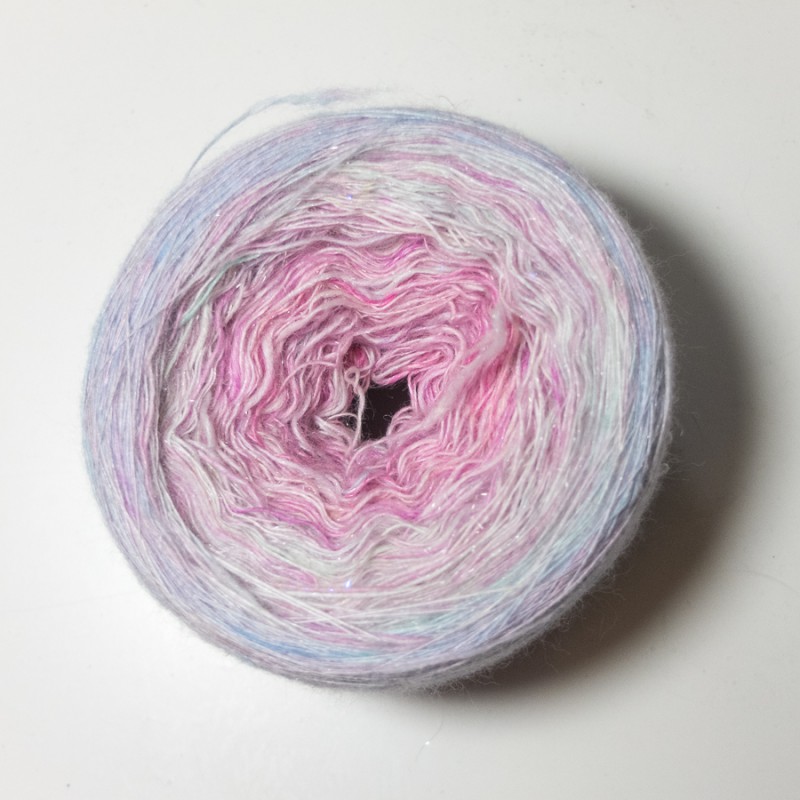
In the picture above you can see that there is a bit of a colour gradient going on there. One end of the single has significantly more pink fibre, while the other has some extra mint green (not that visible in the pic, but it’s there). It’s subtle, and more visible than I expected!
To keep the gradient, and to create a yarn that was not again a lace weight, I decided to n-ply. A good idea, because the yarn still turned out to be a light fingering weight.
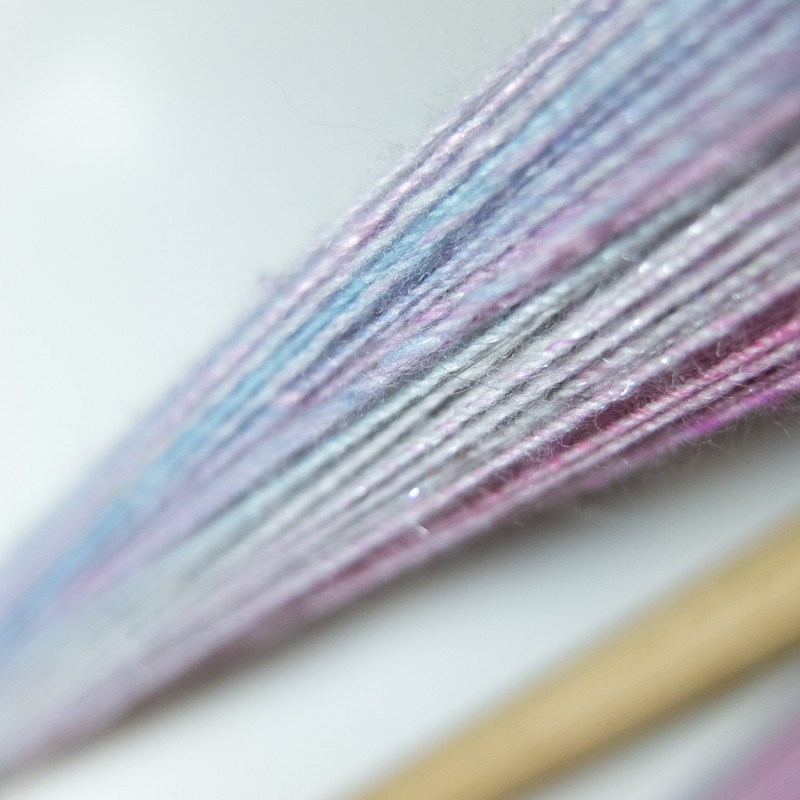
I love this yarn! It’s so cold and icy, while fragile and positive at the same time. The soft pink, silver, and mint make it look like fairy tale yarn. It really lives up to its name, Midwintereenhoorn (Midwinter unicorn).
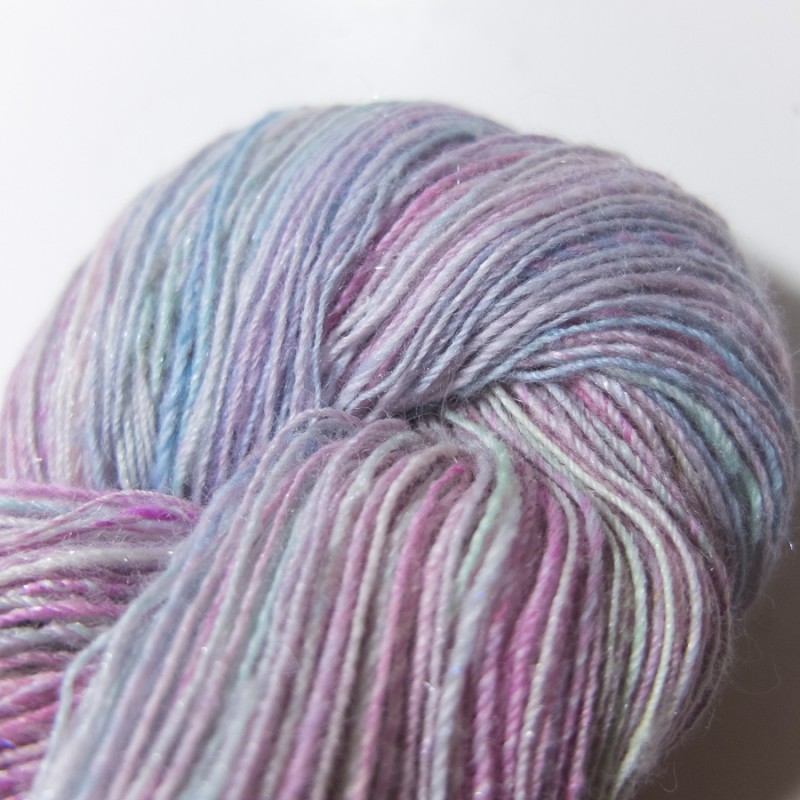
I have made the pictures before giving the yarn a bath. I could not wait to show it off! I’m already dreaming about what it could become… But I’m in no hurry, because I have a new spinning project to keep me occupied while I think about all the possibilities…
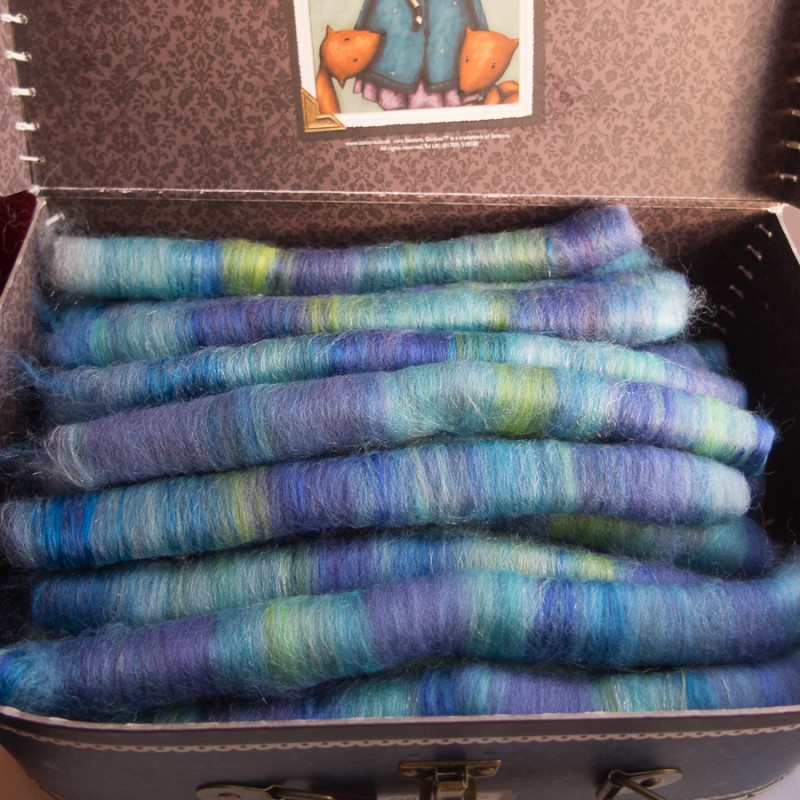
wonderful post… wonderful project!
That is so gorgeous! And your posts have made me want a glasspindle of my own. 🙂